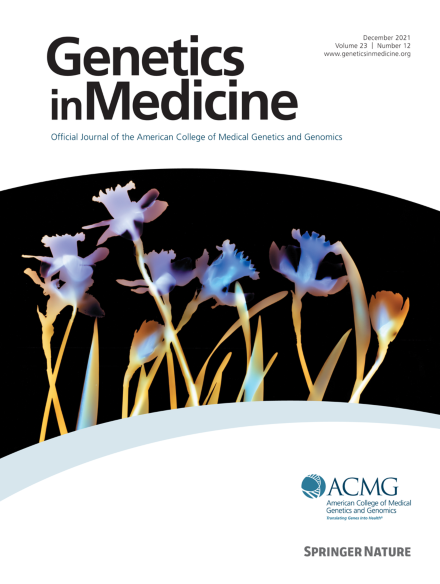Trends in and predictors of patient pharmacogenomic test uptake in a national health care system
IF 6.6
1区 医学
Q1 GENETICS & HEREDITY
引用次数: 0
Abstract
Purpose
Better understanding patient uptake of pharmacogenomic (PGx) testing may inform its implementation and maximize the benefits that such testing can confer. This study examined patient and provider factors associated with PGx test ordering in a national health care system in which panel-based testing was implemented as part of routine care.
Methods
We used a retrospective matched cohort design and data from the Veterans Health Administration Corporate Data Warehouse. A conditional logistic model was used to identify factors associated with a PGx order receipt and estimate odds ratios and 95% confidence intervals.
Results
The following patient factors predicted receipt of a PGx test order: younger age, married status, rural residence, non-Hispanic Black or Hispanic race/ethnicity, PGx educational mailer receipt, depression diagnosis, allergy to a drug on the panel, prescriptions for drugs on the panel, and specialty care visits (P < .05). Additionally, patients whose providers were female, younger, a nurse practitioner/physician assistant or pharmacist, or participated in an educational mailer program were more likely to receive an order (P < .05).
Conclusion
This study highlights factors that may facilitate or hinder the widespread and equitable implementation of PGx testing in a large national health care system. The information is being used to further refine the program.
全国医疗保健系统中患者药物基因组学测试接受趋势和预测因素。
目的:更好地了解患者对药物基因组学(PGx)检测的接受程度可为其实施提供依据,并最大限度地发挥此类检测所能带来的益处。本研究考察了在一个全国性医疗保健系统中,患者和医疗服务提供者与订购 PGx 检测相关的因素:我们采用了回顾性匹配队列设计,数据来自退伍军人健康管理局企业数据仓库。我们使用条件逻辑模型来确定与收到 PGx 订单相关的因素,并估算出几率比和 95% 的置信区间:结果:以下患者因素可预测是否收到 PGx 检验订单:年龄较小、已婚、农村居民、非西班牙裔黑人或西班牙裔种族/民族、收到 PGx 教育邮件、抑郁症诊断、对面板上的药物过敏、面板上的药物处方以及专科护理就诊(P结论:该研究强调了可能促进 PGx 检验订单的因素,并估算了几率比和 95% 的置信区间:本研究强调了可能促进或阻碍在大型国家医疗保健系统中广泛、公平地实施 PGx 检验的因素。这些信息将用于进一步完善该计划。
本文章由计算机程序翻译,如有差异,请以英文原文为准。
求助全文
约1分钟内获得全文
求助全文
来源期刊

Genetics in Medicine
医学-遗传学
CiteScore
15.20
自引率
6.80%
发文量
857
审稿时长
1.3 weeks
期刊介绍:
Genetics in Medicine (GIM) is the official journal of the American College of Medical Genetics and Genomics. The journal''s mission is to enhance the knowledge, understanding, and practice of medical genetics and genomics through publications in clinical and laboratory genetics and genomics, including ethical, legal, and social issues as well as public health.
GIM encourages research that combats racism, includes diverse populations and is written by authors from diverse and underrepresented backgrounds.
 求助内容:
求助内容: 应助结果提醒方式:
应助结果提醒方式:


